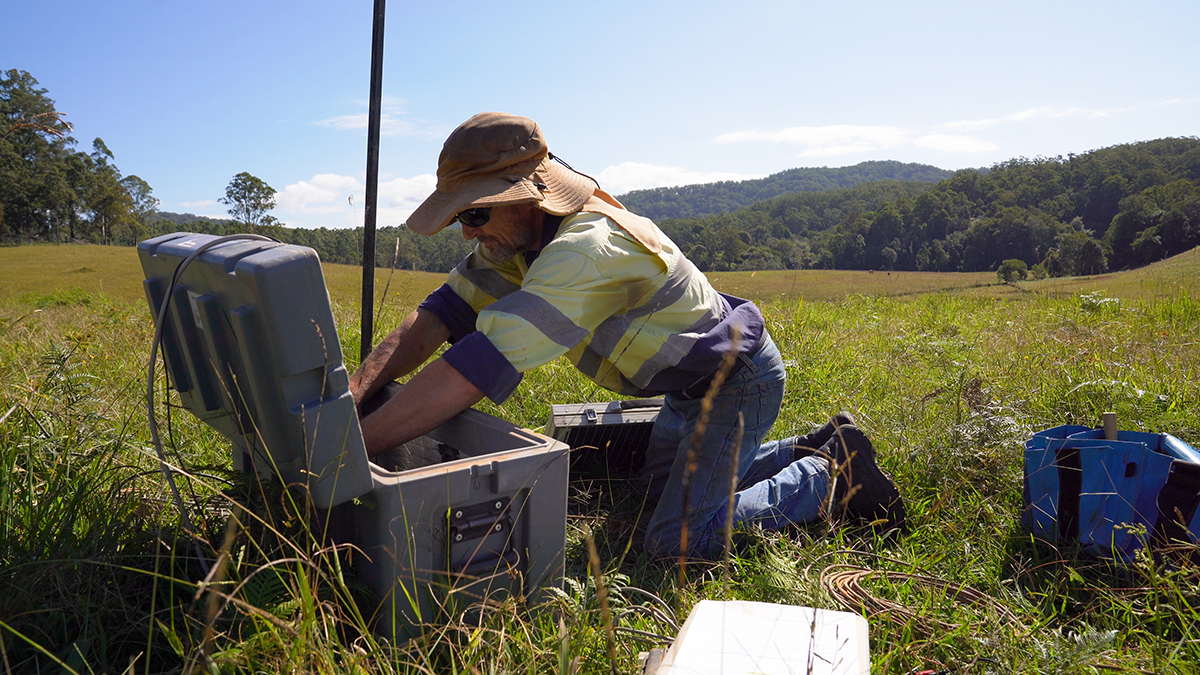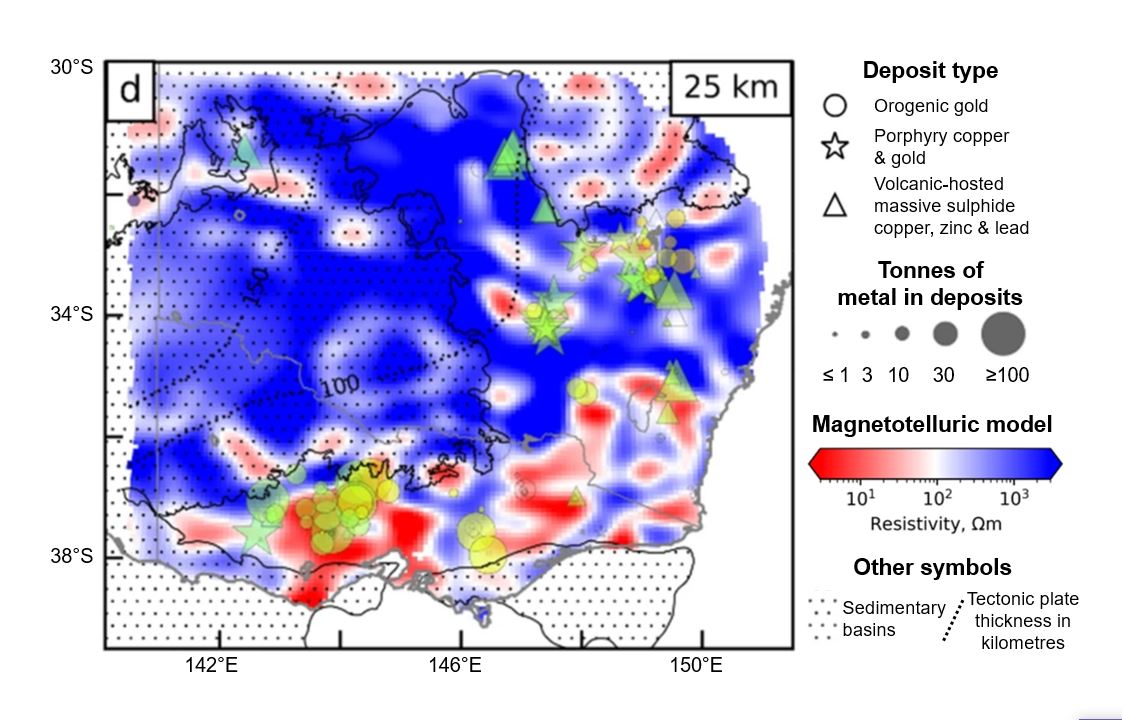A Geoscience Australia-led team of researchers have made it easier for explorers to strike gold, by uncovering previously unknown patterns in global geology that can be used to explore for gold deposits.
In findings published this week in the journal Nature Scientific Reports, researchers from Geoscience Australia’s Exploring for the Future program, the University of Adelaide and the United States Geological Survey compared magnetotelluric data from across Australia, North and South America and China for the first time.
“Like a live wire detector, magnetotelluric instruments identify natural electric conductors in the Earth from tens to hundreds of kilometres beneath the Earth’s surface that are sometimes linked to copper, gold and associated critical mineral deposits,” the Exploring for the Future program’s Senior Science Advisor, Dr Karol Czarnota explained.
“Through this analysis, we’ve found that we can pinpoint areas for exploration by using statistics to look through the whole tectonic plate and identify which conductors have the greatest potential to be associated with mineral deposits. This is the first time we have identified statistically robust, global insights of this kind, which image the source regions of minerals deep in the crust and pinpoint favourable areas for exploration.
“In short, our findings indicate there is a ‘sweet spot’ for gold discovery. This information will make it much easier for gold explorers to zoom in on new prospective ground. It could even be used to open new mineral provinces across Australia, sparking a modern-day gold rush.
“This information could also help find other vital resources such as copper, tellurium, antimony and other critical minerals used in alloys and electrification.”
The paper also sheds light on the source of gold in orogenic gold deposits – deposits formed in mountain-building zones.
“We’ve learnt that gold in orogenic gold deposits is most likely sourced from the mid to lower part of the Earth’s crust as opposed to the even deeper layer in the Earth, the mantle. This answers the question of where the gold in deposits that helped build towns like Ballarat and Bendigo came from,” Dr Czarnota said.
The research drew on data from the Australian Lithospheric Architecture Magnetotelluric Project (AusLAMP), which is a partnership between Geoscience Australia, state and territory geological surveys, AuScope and universities to acquire magnetotelluric data across the Australian continent.
So far, the national AusLAMP project has modelled the underlying geology of more than 2.5 million square kilometres across Australia, revealing electrical conductors and resistors that extend deep below the Earth’s surface.
“We know 80% of the Australian continent is ‘undercover’ – which means some of the best geology containing mineral, energy and groundwater resources is hidden under a blanket of younger sediments,” Dr Czarnota said.
“Magnetotellurics is one of the few techniques that can ‘see’ through this cover. This technology is a powerful tool for mineral exploration – using it, we are basically learning how to read nature.”
The full research is available via .









